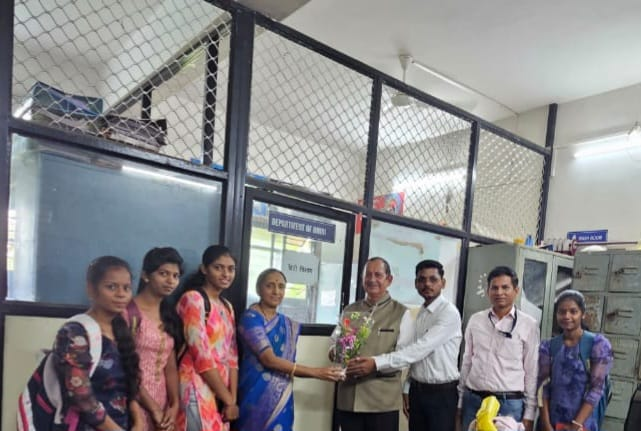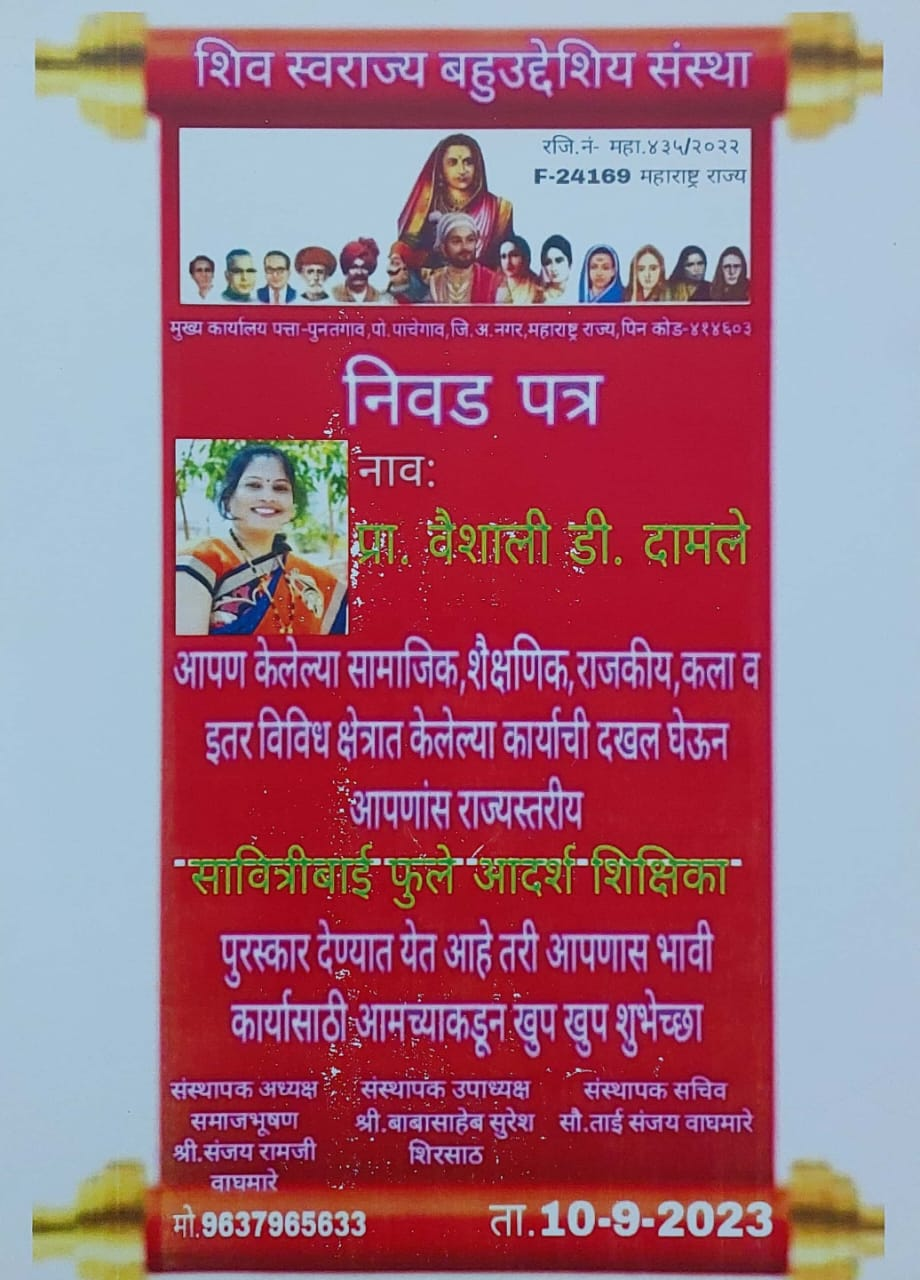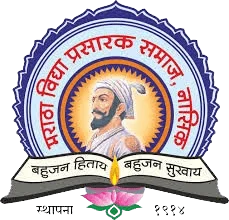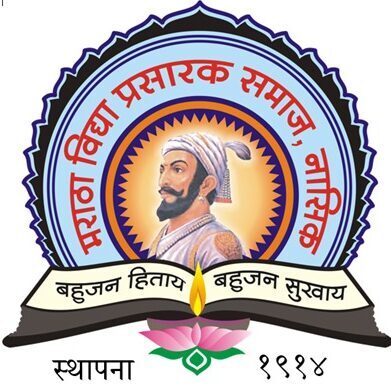Dept. of Hindi Establishment-2013
Vision
“छात्रों में हिंदी भाषा एवं साहित्य के प्रति अभिरुचि निर्माण करना तथा साहित्यिक गतिविधियों को उन्नत करना l”
Mission
“अहिन्दी भाषी छात्रों को हिंदी भाषा की ओर अग्रेसर करते हुए, हिंदी भाषा तथा रोजगार के अवसर को प्रदान करना l ”
Objective
- साहित्यके प्रति रूचि निर्माण करना l
- छात्रोंको हिंदी साहित्यकारों से परिचित कराना l
- हिंदीभाषा के माध्यम से रोजगार के अवसर प्रदान करना l
Establishment of Dept. : June 1981
Subjects Taught
- B.A. Specialization in Hindi
- First Year B.A- Hindi
- S. Y. B.A. Hindi
Co-curricular/ Extracurricular Activities :
- Yoga and Meditation training course
- Tree Plantation inside and outside College Campus
- E-learning by Google Classroom, Zoom Video app, Whatsapp etc.
Maratha Vidya Prasarak Samaj’s
K.P.G. Arts. Commerce and Science College, Igatpuri, Nashik
Program Outcomes, Program Specific Outcomes, and Course specific Outcomes
Department of Hindi
| Program Outcome: B.A. (Hindi) | |
| 1. | Student seeking admission for B.A. programme isexpected to imbue with followingquality which helpsthem in their future life to achieve the expected Goals. |
| 2. | Realization of human values. |
| 3. | Sense of social service. |
| 4. | Responsible and dutiful citizen. |
| 5. | Creative ability. |
| Program Specific Outcome: B.A. (Hindi) | |
| 1. | To understand the basic concept and subject of Hindi & its origin. |
| 2. | To make or not the importance of subject Hindi & its Branches. |
| 3. | To understandvarious aspect of Hindi literature with a process to reach method and giving new mode and direction |
| 4. | To make attempt in different area and theory such as vocabulary and vice versa |
| 5. | To understand in the Literature more in a border areas then merely confined to subject |
| 6. | To know about Hindi literature its roots cause perspectives and methods. |
| 7. | Elaborating and understanding its philosophical methods of Hindi Literature. |
| 8. | Evaluating the concept of Hindi from past to present and making the society more closely through literature |
| Course Outcome: B.A. (Hindi) 2019-21 CBCS New Syllabus | ||
| Class | Course title | Outcome |
| F.Y.B.A | Sem I
Vaikalpik Hindi (A)
|
1. Hindi poetry literature is developed to students
2. Awareness about Hindi story Literature 3. Communication skills through Hindi language is developed 4. Original writing trends is increased 5. Advertisement writing skills is developed 6. Translation information is provides 7. Relative information is provided. 8. Awareness about Hindi computing is developed.
|
| Sem II
Vaikalpik Hindi (B)
|
1. Hindi poetry literature is developed to students
2. Awareness about Hindi story Literature 3. Essay writing skill is developed. 4. Advertisement writing skills is enhanced.
|
|
| S.Y.B.A | Sem III
A) MIL (Hindi Bhasha Shikshan)
|
1. Students are introduced to Hindi Language Pedagogy
2. Students can understand Hindi Language Pedagogy Translation 3. Students can read Hindi Language Pedagogy 4. Students can write Hindi Language Pedagogy.
|
| S.Y.B.A | Sem IV
A) MIL (Hindi Bhasha Shikshan)
|
1. Students are introduced to different forms of sentences.
2. Students can introduced to special types of sentences 3. Students are introduced to Hindi Language Pedagogy 4. Students can understand Hindi Language Pedagogy Translation 5. Students can read Hindi Language Pedagogy
|
| S.Y.B.A | Sem III
B)SEC-2A (Anuwad Swaroop avam Vyavhar)
|
1. Translational Skill is developed among the students
2. The student can understand the translational form 3. The students are introduced to area of translation 4. Translation of Hindi to Marathi is developed 5. Skill of translation from English to Hindi or Marathi is developed.
|
| S.Y.B.A | Sem IV
B)SEC-2B (Madhyam Lekhan)
|
1. Medium of writing is developed among the students
2. Creativity in Autobiography is developed among the students 3. Medium of writing is introduced to students 4. Audio Video mediums of communication is known to students
|
| S.Y.B.A (G2) | Sem III
(C) Adhunik Kavya, Kahani tatha Vyavarik Hindi (G-2)
|
1. Students are introduced to Poetry Literature
2. Students are introduced to Story Literature 3. Students can understand the Hindi management skill 4. Origin of words and actual use in sentence is developed among the students. 5. Ability of Precise writing is developed 6. Creativity is developed for the students.
|
| S.Y.B.A (G2) | Sem IV
C) Adhunik Hindi Vyang Sahitya tatha Vyavarik Hindi (G-2)
|
1. Students are introduced to Sarcasm
2. Students are introduced to Story Sarcasm 3. Art of Literature among the student is developed 4. Communication skill of Language is developed 5. Art of Expansion creativity is developed.
|
| S.Y.B.A (S1) | Sem III
D) Kavyashastra (S-1)
|
1. Students are introduced to Indian Kavyashastra (poetry)
2. Termlogy and Elements of poetry are introduced to students 3. Different forms of literature is developed 4. An interest in Critical Ability of Indian Kavyashastra id developed.
|
| S.Y.B.A (S1) | Sem IV
D) Sahitya ke Bhedh (S-1)
|
1. Students are introduced to differences in literature
2. Poetry differences are introduced to students 3. Epic, Khand kavya and Muktak Kavya are introduced 4. Forms of Drama are made understood.
|
| S.Y.B.A (S2) | Sem III
E) Madhyayugin Kavya tatah Upanyas Sahitya(S-2)
|
1. Students are introduced to Kabir Literature
2. Incidents in Mirabai Literature is explained to students 3. Accreditation about Indian is developed 4. Assessment about Novel can be done by students 5. Creativity in Literature and its relation to life value can be enhanced to students
|
| S.Y.B.A (S2) | Sem IV
E) Madhyayugin Kavya tatah Upanyas Sahitya(S-2)
|
1. Students are introduced to Rahim Literature
2. Expressions of Bihari Ki Kavya is understood to students 3. Hindi Drama and stage Creativity is developed 4. Acting Skills of Students is developed 5. Theatrical Play is introduced for the students
|
| T.Y.B.A (G3) | Course outcomes Class: -T.Y.B.A. (2013 old syllabus) Yearly
1. Students get knowledge about biography, long poetry and drama. 2. Official and Professional knowledge of Hindi is enhanced. 3. Letter writing, Application drafting in Government offices is developed. 4. Skill of Letter drafting is enhanced. 5. Effectiveness and skill of translation of English to Hindi is developed.
|
|
Department of Hindi
- About Department of Hindi :
Department of Hindi was established in-2013.
- Vision of the Department :
To Creat interest in Hindi language and literature among students and to promote educational activities among them.
To acquaint students with certain literatures of Hindi literature.
- Mission of the Department :
To attract non-Hindi speaking students towards Hindi language and to get Hindi language employment opportunities.
- Objective of the Department :
1.Enhance your interest in Hindi literature in the students.
- To developed auditory,reading and writing Capacity of Hindi language students.
- Develop a scence of love and social Commitment among the students in the nation.
- Encourage the learning skills and literary Consciousness among the students.
- Inspire students to spread and promote national Language Hindi.
The Department offering B.A Course at U.G Level.
Mr.B.B.Shingade,Mrs.V.D.Damale,were Successfully done their work as HoD. Presently work as Mr. Rahul Bahot is a Head of Department. Department have qualified 02 Full-time faculties,who have interest in various fields in Hindi Subject. Mr. Mahesh Pardeshi has been newly inducted into the Hindi Department .A various faculties of our Department has published books, Research Project, achieve award,and various state,national, International seminars,conferences have been present the paper.
Department head Mr.Rahul Bahot has published 01 reference book and 01 Research project has been completed. Successfully completed Orientation and Refresher Cources from other University. One faculty member Mrs.V.D.Damale received state level Best Teacher award (2023-24) from ‘Shivswarajya sanstha’ Tal-Nevasa. Dist-Ahmadnagar.
Our department organizing activities for skill development of students like Hindi day programme, Munshi premchand birth anniversary, to celebrates National day for Hindi Din under the Hindi saptah conducts various competitions like poetry reading, essay writing, slogan writing,Elocution competition have been conduted a various activities of the department each every year. Department has mentained 80-90 % result of B.A Hindi. So many students from our department has Successfully working in various Government and private sectors like school, colleges, companies, police department etc. Faculties presented and published a Research paper in national and International Conferences.

म.वि.प्र.समाज संचालित,
के.पी.जी. कला, वाणिज्य एवं विज्ञान महाविद्यालय,इगतपुरी.
–हिंदी विभाग–
Number of Award faculty Achievement
| अ.क्र. | प्राध्यापकाचे नाव | पुरस्काराचे नाव | दिनांक | स्थळ |
|
1
|
श्रीमती वैशाली दगू दामले |
सावित्रीबाई फुले राज्यस्तरीय आदर्श शिक्षिका पुरस्कार |
30/09/2023 |
शिवस्वराज्य बहुउद्देशीय संस्था पुनतगांव,ता.नेवासा,जि.अहमदनगर. |



